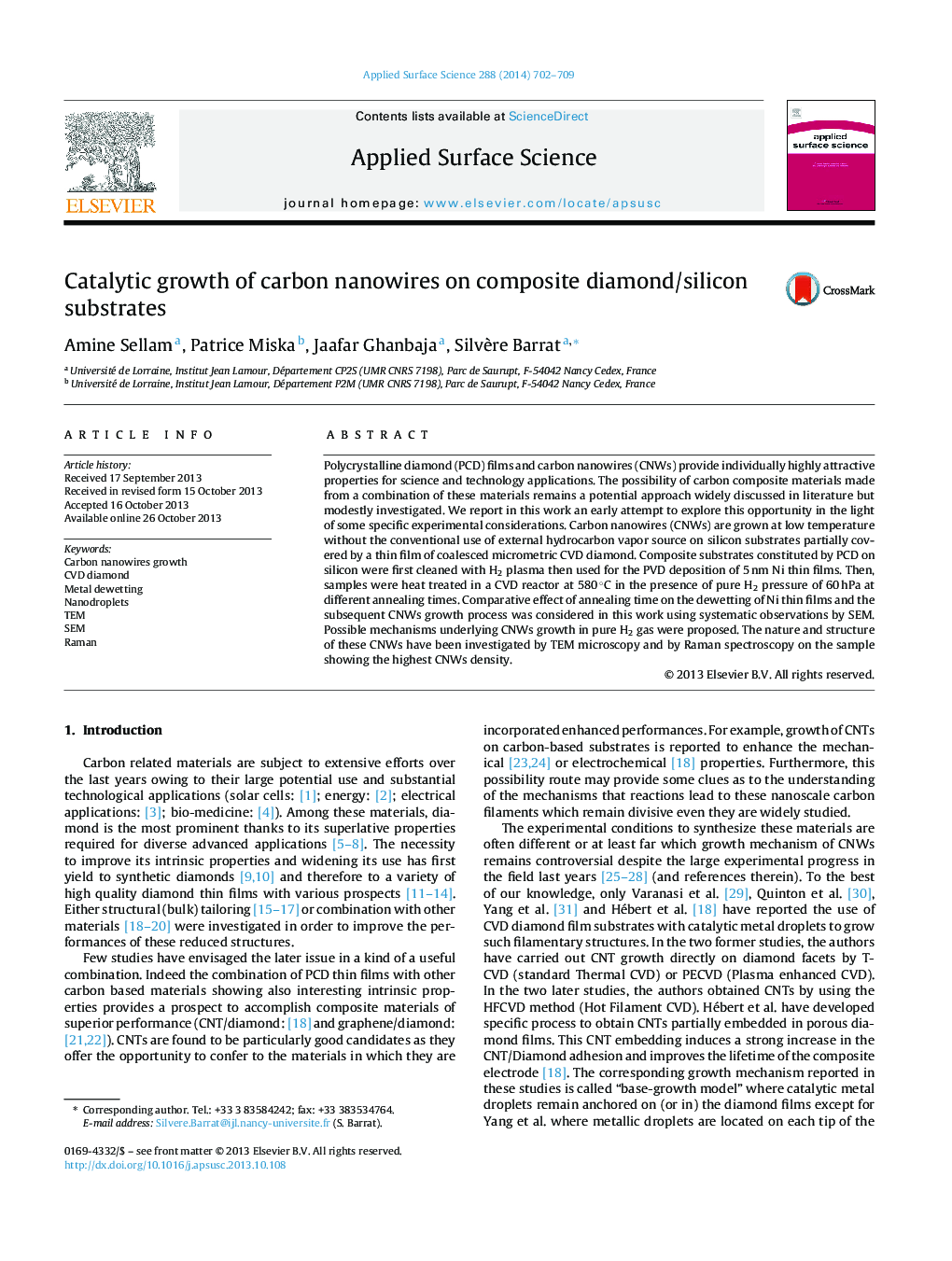| Article ID | Journal | Published Year | Pages | File Type |
|---|---|---|---|---|
| 5351902 | Applied Surface Science | 2014 | 8 Pages |
Abstract
Polycrystalline diamond (PCD) films and carbon nanowires (CNWs) provide individually highly attractive properties for science and technology applications. The possibility of carbon composite materials made from a combination of these materials remains a potential approach widely discussed in literature but modestly investigated. We report in this work an early attempt to explore this opportunity in the light of some specific experimental considerations. Carbon nanowires (CNWs) are grown at low temperature without the conventional use of external hydrocarbon vapor source on silicon substrates partially covered by a thin film of coalesced micrometric CVD diamond. Composite substrates constituted by PCD on silicon were first cleaned with H2 plasma then used for the PVD deposition of 5 nm Ni thin films. Then, samples were heat treated in a CVD reactor at 580 °C in the presence of pure H2 pressure of 60 hPa at different annealing times. Comparative effect of annealing time on the dewetting of Ni thin films and the subsequent CNWs growth process was considered in this work using systematic observations by SEM. Possible mechanisms underlying CNWs growth in pure H2 gas were proposed. The nature and structure of these CNWs have been investigated by TEM microscopy and by Raman spectroscopy on the sample showing the highest CNWs density.
Keywords
Related Topics
Physical Sciences and Engineering
Chemistry
Physical and Theoretical Chemistry
Authors
Amine Sellam, Patrice Miska, Jaafar Ghanbaja, Silvère Barrat,
